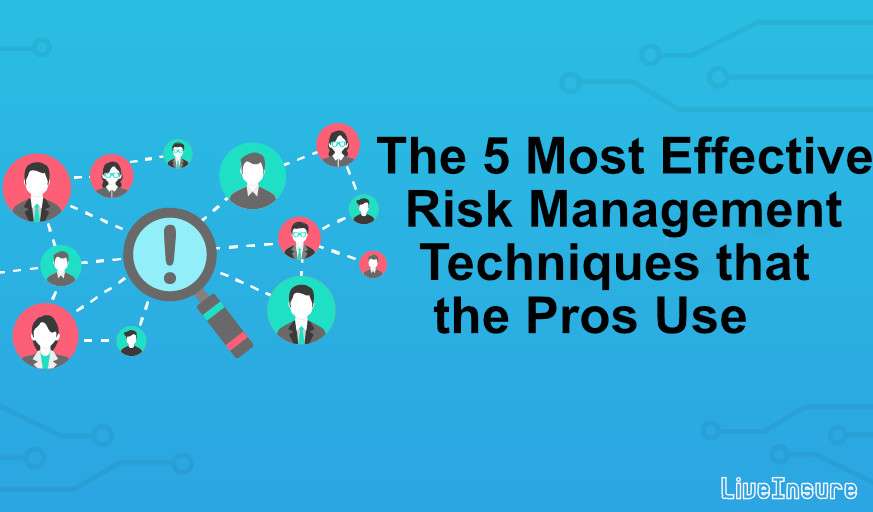Risk management. It’s a topic that comes up often in trading blogs, books, and courses. But is it really practical? I mean, if you put a trade on, then you know the market is going to go your way, right? Stops are for buses!
WRONG.
Risk management must be part of your core trading strategy. Protecting the money you made is the way to make consistent profit, and ensure you have a long, successful trading career.
Like I’ve said before, if you make 1,000% in 2018, then lose 80% in January 2019, you’re not going to be a trader for very long.
Trading without risk management is like skydiving without a second parachute. What happens if the first one doesn’t open?
Using indicators to make profit will only get you so far if you’re not protecting your positions.
I’m bringing the best risk management strategies to you straight from the horses mouth. Read on to find out the most effective risk management strategies that the pros use!
1) Consider Your Portfolio as a Whole to Ensure Long-Term Survival
Alexander Lowry (@AlexanderSLowry) is a professor of finance at Gordon College, and also the Director for the school’s Master of Science in Financial Analysis program. He recommends that you view your portfolio as a whole, not just a series of individual bets.
Here’s his advice:
“There’s a secret of professional investors: on the whole, individual stock selection doesn’t really matter. What really matters, over the long term, is asset-allocation decisions. It’s not what stocks you buy. It’s when you buy stocks versus when you buy bonds, gold, cash, real estate, etc. that matters.
Several academic studies demonstrate why portfolio allocation (how much of which type of assets you own) is far more important in determining your results than simply which stocks or bonds you buy. The takeaway from these studies is that asset allocation is far more important to your total portfolio return than stock picking. That’s why most professional investors (like the top hedge-fund managers) allow analysts to do the stock picking, while they focus almost exclusively on the core allocation decisions.
On the other hand, most individual investors don’t spend any time or effort on managing asset allocation. They’re typically fully invested in stocks all the time. Most individual investors don’t even know how to buy bonds (which is a critical component of asset allocation), and they do a terrible job at position sizing, another critical component.
Think about this in terms of risk management by not putting all your eggs in one basket. Perhaps someone today thinks bitcoin will be a home run and they’ve got 50% of their assets invested in it. That’s far too leveraged of a bet. Especially for an asset as volatile as bitcoin.
Asset allocation is the component of your wealth plan that deals with the amount of money you have in various assets. How much of your wealth is in cash? Stocks? Precious metals? Real estate? This all goes under the umbrella of asset allocation. The number one goal with asset allocation is to avoid taking too much risk in just one asset class… because when one asset class “zigs,” others will “zag.” In this way, effective asset allocation allows you to sidestep financial disaster.”
Diversification is the real benefit here. You’re no longer reliant on a single asset class performing well, and will be protected from big swings in a single asset.
2) Use Stops to Limit Your Losses
Nate Masterson has been a freelance Financial Consultant since 2011, and is currently the Marketing Manager for Maple Holistics. He advises the use of stop losses to limit downside risk, saying:
“One of the easiest and most effective ways of protecting yourself against the risks of a volatile market/trade is by using stop losses. When you know how to utilize them correctly based on the nature of the stock, commodity or index that you’re trading with, you can protect yourself quite effectively against losses or inefficient trading, i.e. trades that lose money, rather than earn profit.
While the principle of a stop loss is pretty straight-forward, the art comes in knowing how to treat each trade individually. This is done most effectively with experience in the marketplace, and having a general and specific understanding of the factors that affect each trade independently — whether that’s innovation in the relevant sector/industry, global affairs and political issues, or even things as arbitrary as the weather. Taking as much into account before you set a stop loss, based on your prior experience with the stock/commodity/index, will allow you to make a good assumption and ultimately protect your trade.
As Masterson says, the idea of a stop loss is to close your position if the market goes too far against you, before you lose too much money and wipe out your account. Here’s how to go about setting a stop loss:
The first step is to set a threshold for your trade. This is essentially the maximum amount that you’re willing to lose on the trade before selling and can usually be expressed as a percentage of the initial purchase price. However, deciding on the triggers for that threshold are where experience really comes in handy as certain stop losses work better when considering a high-low average over a certain time period, while others should simply act as automated ‘blockers’ that allow you to protect your investment up to a reasonable point.
My advice would be to always consider the previous trends in the stock/commodity/index over the past week and then review whatever news you can find related to the subject online before deciding how to place your stop loss and at what amount you’d like to set it or based a certain movement pattern.
Once you have as much information as you can gather on the trade before making it, you’ll be better suited to protect your investment by creating a stop loss that is both accurate and realistic.”
Stop losses should be at the core of your risk management strategy. Whether they’re actual stop orders with your broker, or stop losses set in your trading system, they should be there.
3) Take Advantage of Trailing Stops to Protect Your Profit
In addition to static stop losses, you can use trailing stops. For a long position, this is essentially a stop loss that follows the price of the asset as it moves up, but stays put if the asset price starts to go the other way. And vice versa for a short position. A trailing stop allows you to lock-in profit as you make it, by protecting you against significant moves against your position.
Marc Lichtenfeld (@stocksnboxing) is the Chief Income Strategist of the Oxford Club, the Sr. Editor of the Oxford Income Letter and the author of two Amazon #1 Best Sellers: Get Rich with Dividendsand You Don’t Have to Drive an Uber in Retirement. He says:
“At the Oxford Club, we use a 25% trailing stop and recommend investors allocate 4% or less of their trading capital to any single position. That way, if the stock is down 25%, the most the investor can lose is 1% of their portfolio, which is a sum that’s easy to recover from.”
Additionally, Lichtenfeld recommends the stop be lifted every time the stock hits a new high, in order to protect profits and ensure investors aren’t riding a loser all the way down to the basement. And that stops should be set on a closing basis rather than intraday to avoid being shaken out of stocks that drop suddenly only to quickly rebound such as in a flash crash “When a stock closes at or below your stop, investors can have more confidence that the move lower is for real, rather than market noise.”
4) Size Your Positions Correctly to Optimize Your Risk Level
Position sizing is a critical component of your risk management strategy. By using it correctly you can avoid large drawdowns in your trading capital, while maintaining profit.
Alexander Lowry states that proper position sizing is, “One of the most important decisions you’ll make as an investor, and it is even more critical during volatile markets like today.”
5) Utilize Covered Calls to Minimize Downside Risk
“A simple way to reduce the risk of holding stocks and ETFs, while increasing cash flow at the same time, is to sell call options against your shares each week or month. It’s called “writing a covered call” (where you own the underlying stock but sell (short) call options against those shares). The negative is you put a cap on your upside, but in return you gain weekly or monthly income to protect part of any downside move. If you do this consistently over many months or years you will achieve a higher risk-adjusted performance than buy-and-hold (i.e. higher return with lower standard deviation — see academic studies proving this). Many pros and amateurs do this today. Schwab has said that 84% of their accounts that trade options use covered calls. It’s a simple and effective risk reducer / income generator.”
The major components of your risk management strategy should be:
- Stop losses
- Correct position sizing
- Asset allocation
The covered call strategy is more advanced, and definitely difficult to utilize in the cryptocurrency world, but the option is there for those of you who want to experiment with more advanced strategies.
“The elements of good trading are: 1) cutting losses, 2) cutting losses, and 3) cutting losses. If you can follow these three rules, you may have a chance.” — Ed Seykota
As the Market Wizard himself says, PROTECT YOUR CAPITAL.
The strategies listed above are all focused on protecting your portfolio against loss, they won’t necessarily help you to improve your profit on a per trade basis, but they will help your monthly and yearly total profit increase because the size of your losers will decrease.
If you use any other risk management strategies, let me know in the comments below!




